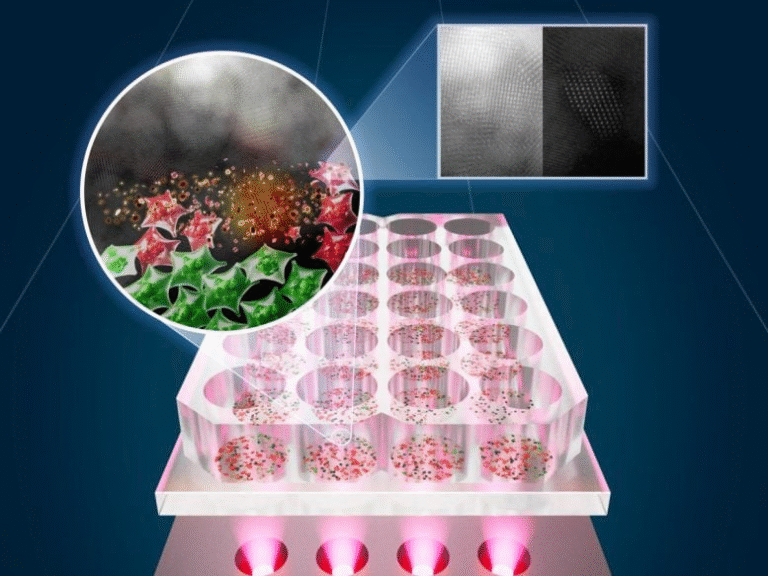Why Nutrition Is Still a Mystery – Know about The Dark Matter of Food

When we think about food, most of us imagine calories, proteins, fats, carbohydrates, vitamins, and minerals. For decades, this simplified framework has shaped how nutrition is taught, marketed, and regulated.
But modern science is showing us that this view barely scratches the surface. The food we eat is not just fuel — it is a chemical universe packed with tens of thousands of compounds, most of which remain unstudied. Researchers now call this the “nutritional dark matter”, borrowing a metaphor from physics to describe the hidden world of chemicals in our meals.
Understanding this hidden chemistry could completely change how we approach health, disease prevention, and even medicine. Let’s dive into the specifics of what’s known, what’s still uncertain, and why unlocking this mystery could be revolutionary.
Food as More Than Calories and Nutrients
For much of history, nutrition science has been limited to about 150 well-known chemicals such as proteins, fats, carbohydrates, vitamins, and minerals. These are what most food labels display and what most dietary guidelines focus on.
But researchers now believe that the human diet actually contains more than 26,000 distinct compounds. Many of these compounds are bioactive chemicals that interact with our bodies in ways we barely understand. In fact, ongoing cataloging efforts suggest the number could exceed 130,000 molecules when fully mapped.
This is where the term nutritional dark matter comes in. Just as dark matter in the universe cannot be seen directly but reveals itself through gravitational effects, the chemistry of food influences our biology in invisible and often overlooked ways.
Why Nutrition Shapes More Than Genes
Back in 2003, when the human genome was sequenced, many thought we’d cracked the code of disease. But genetics only explains about 10% of overall disease risk. The remaining 90% is shaped by environmental factors, with diet playing a particularly major role.
Globally, poor nutrition is linked to roughly one in five deaths among adults over 25. In Europe, dietary factors alone account for nearly half of all cardiovascular fatalities.
Despite decades of health campaigns urging people to cut down on salt, sugar, and fat, obesity rates and diet-related diseases keep climbing. The uncomfortable truth? Something crucial is missing from how we think about food.
The Role of Foodomics
To tackle this gap, scientists are turning to foodomics — an interdisciplinary approach combining genomics (genes), proteomics (proteins), metabolomics (metabolites and cell activity), and nutrigenomics (the interaction of diet and genes).
Foodomics is revealing that diet is not just about “energy balance” but about complex interactions between molecules and biology. For example, the Mediterranean diet — rich in fruits, vegetables, whole grains, legumes, nuts, olive oil, and fish — is widely recognized for reducing heart disease risk.
But why does it work? One clue lies in a molecule called TMAO (trimethylamine N-oxide). This compound is produced when gut bacteria metabolize nutrients in red meat and eggs. High TMAO levels are linked to increased heart disease risk. Interestingly, garlic contains compounds that block the production of TMAO, tipping the balance in favor of better health.
This example shows how seemingly simple food choices can influence health outcomes through highly specific biochemical pathways.
Gut Microbes: The Hidden Players
Our gut microbiome — the community of trillions of bacteria living in our digestive tract — plays a major role in processing food chemicals. When compounds reach the colon, microbes transform them into new molecules that can influence immunity, inflammation, and metabolism.
Take ellagic acid, a compound found in fruits like pomegranates and nuts. Gut bacteria convert it into urolithins, a group of molecules that help maintain healthy mitochondria — the tiny energy-producing structures inside our cells. This is one of many examples of how microbes mediate the effects of diet on health.
Beyond metabolism, diet can even influence gene activity through epigenetics — changes in how genes are switched on or off without altering the DNA sequence itself.
One historical example is from the Dutch famine during World War II. Children born to mothers who endured starvation were more likely to develop heart disease, type 2 diabetes, and schizophrenia later in life. Decades later, scientists discovered their gene activity had been altered by their mothers’ poor nutrition during pregnancy.
Mapping the Hidden Universe of Food
Recognizing the scale of this mystery, projects such as the Foodome Project are working to catalog this vast chemical space. Already, more than 130,000 molecules have been documented, linking food compounds to human proteins, gut microbes, and disease pathways.
The goal is to create an atlas showing how food compounds interact with the body, and more importantly, which of them truly matter for health. This could explain:
- Why certain diets help some people but not others.
- Why foods can prevent disease in one context but promote it in another.
- Which compounds could inspire new drugs or functional foods.
We are still at the beginning, but the vision is clear: mapping nutritional dark matter could revolutionize healthcare and everyday eating.
Why Current Nutrition Falls Short
The failure of public health campaigns to reverse rising obesity and metabolic disease shows the limits of our current focus on calories, fat, sugar, and salt. These are important, but they tell only part of the story.
For example:
- Many foods contain thousands of phytochemicals, which aren’t listed on nutrition labels. Some may protect against disease, others may worsen it.
- Food processing and cooking can generate entirely new compounds, some beneficial (like antioxidants formed during cooking), and others harmful (like acrylamide).
- Our individual gut microbiomes determine how each of us processes food differently, making “one-size-fits-all” nutrition advice less effective.
Without understanding nutritional dark matter, we’re essentially trying to solve health puzzles with missing pieces.
Expanding Knowledge: Extra Details About Nutritional Dark Matter
Secondary Plant Metabolites
These include polyphenols, terpenoids, alkaloids, and flavonoids. While not considered essential nutrients, they often have powerful biological effects such as reducing inflammation, supporting brain health, or influencing blood pressure.
Microbial Metabolites
Our gut microbes produce short-chain fatty acids (SCFAs) such as butyrate, acetate, and propionate. These molecules regulate immunity, protect against colon cancer, and influence appetite regulation. Many of these fall into the nutritional dark matter category because they are not systematically tracked.
Epigenetic Food Effects
Compounds like folate, choline, and polyphenols can alter methylation patterns in DNA, effectively changing how genes express themselves. This is a key mechanism explaining why maternal diet can influence offspring health decades later.
Food Databases vs. Reality
Databases like the USDA FoodData Central cover only a fraction of compounds. Advanced mass spectrometry reveals that a single fruit or vegetable may contain hundreds of unique chemicals that aren’t tracked at all.
Challenges Scientists Face
- Detection vs. Quantification: Many compounds are detected in foods, but scientists don’t yet know how much is present or how stable these molecules are.
- Interactions: Compounds don’t act alone. They can interact, cancel each other out, or amplify effects, making it hard to isolate their roles.
- Microbiome Variability: Since gut microbiomes differ from person to person, two people can eat the same food and produce completely different biochemical outcomes.
- Processing Effects: Cooking, fermenting, or even storing food can alter its chemistry, sometimes creating beneficial compounds, other times harmful ones.
Looking Ahead
The study of nutritional dark matter is only beginning, but its potential is huge. By mapping these hidden compounds, researchers hope to:
- Improve personalized nutrition, tailoring diets to individuals.
- Identify new therapeutic compounds in everyday foods.
- Redesign public health guidelines with a focus on biochemical diversity, not just calories and macros.
In the same way that mapping cosmic dark matter reshaped our understanding of the universe, exploring nutritional dark matter may transform the way we eat and how we think about disease prevention.
Research Reference:
The Conversation – The Dark Matter of Food: Why Most of Nutrition Remains a Mystery





